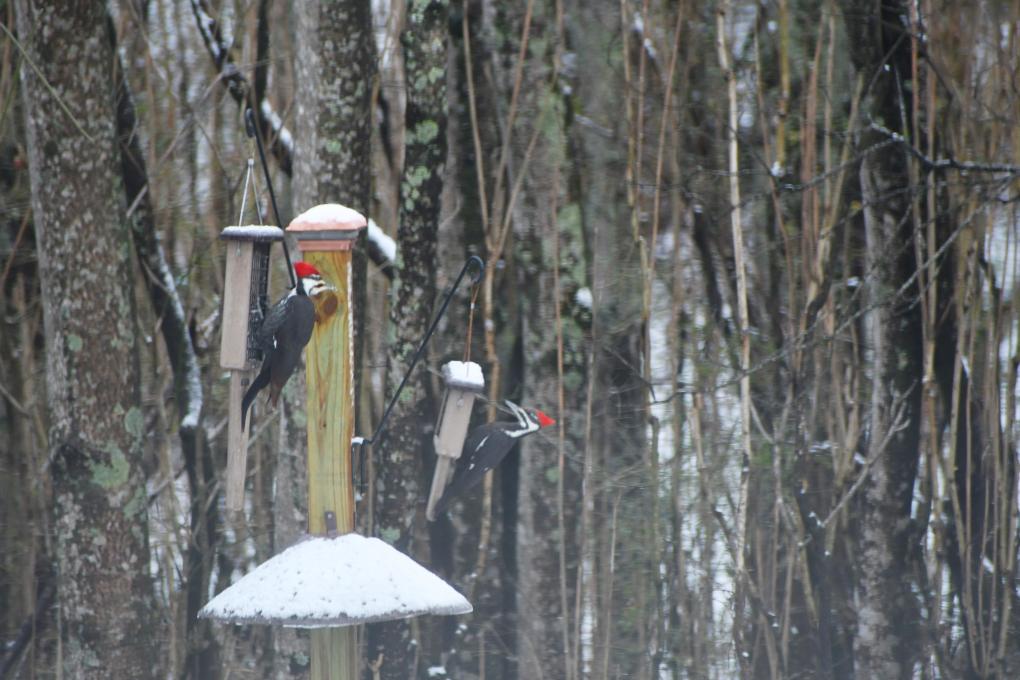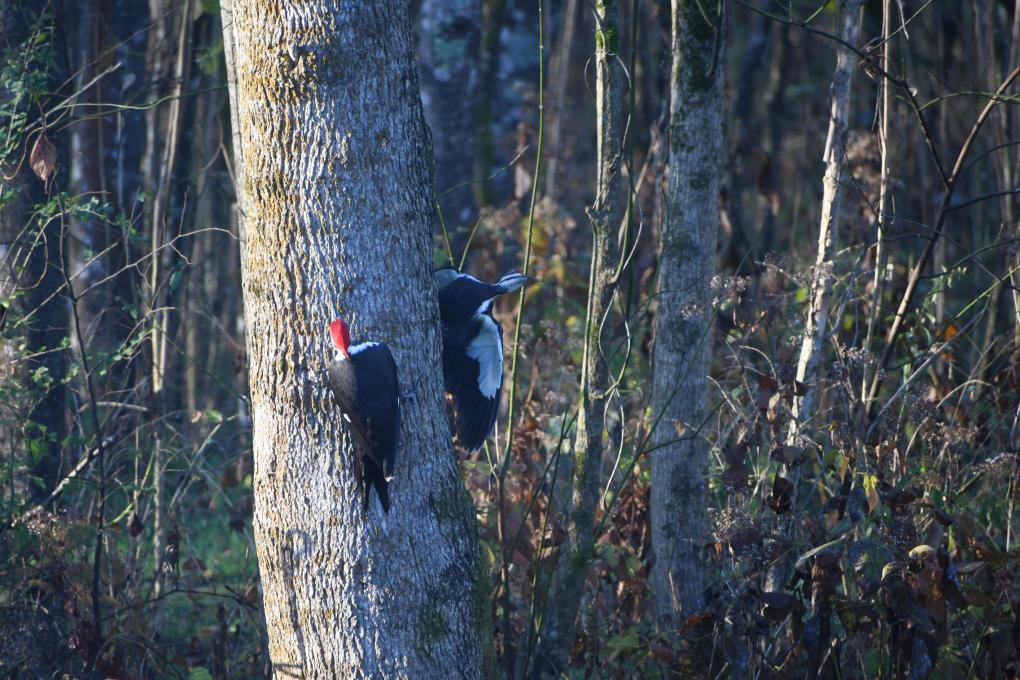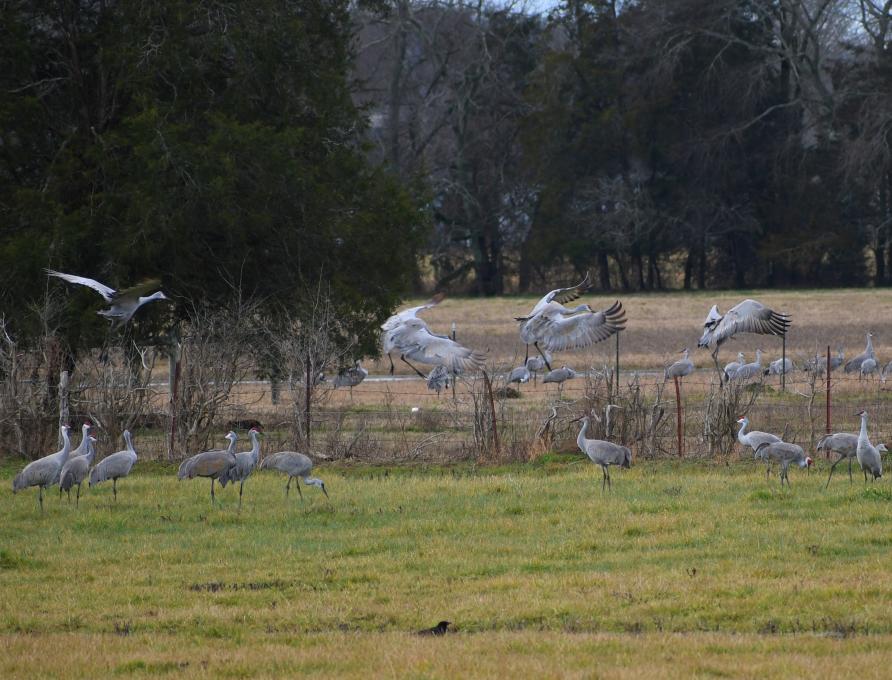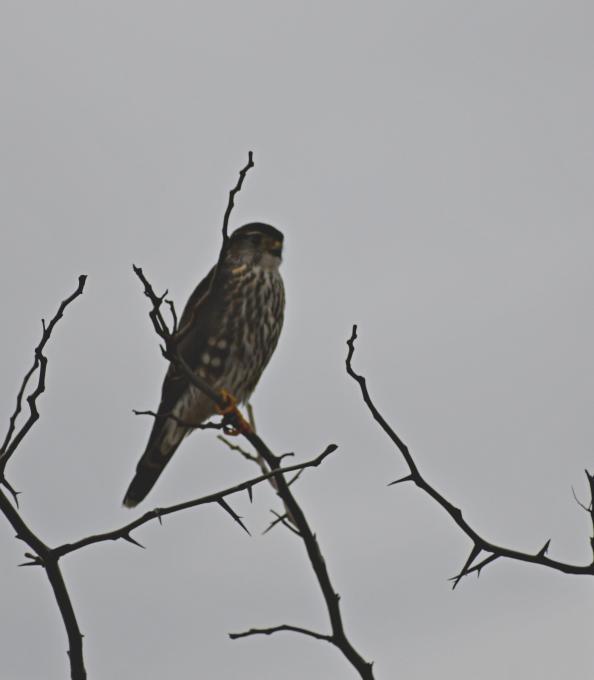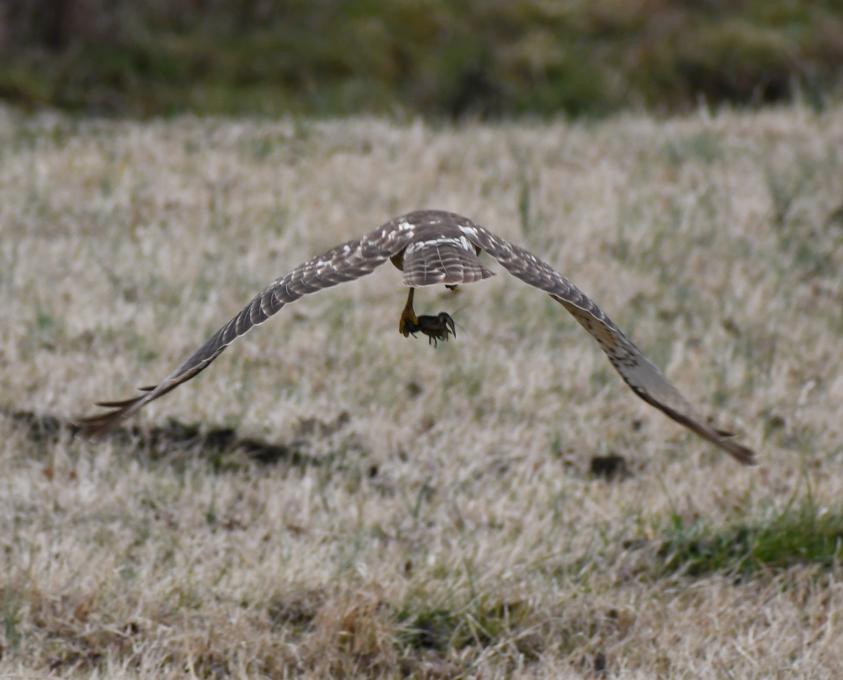Belinda
Forum Replies Created
Viewing 8 posts - 1 through 8 (of 8 total)
-
BelindaParticipantOur songbirds benefit from having crows around. They frequently benefit from the protection crows provide as we observe them mob the resident re-tailed hawk and cooper's hawks that live in our area. This also benefits us as we have learned to observe this behavior and stop what we are doing to scour the skies.in reply to: What is a Crow? #840263
-
BelindaParticipantOne of the biggest challenges I have in the editing process is deciding when the photo I am editing looks the way it should.To be clear, I want good photos but I want them to replicate what I see and knowing the benchmarks for each post-processing step is a new goal. The editing portion of this course was great and while I see much improvement in my edits, I have difficulty recognizing when I have reached my goal. Going step-by-step following the sequence Melissa uses because I have no other baseline, I continue to learn. I want to remain true to the goals I established in the early lessons here of focusing on learning more about the bird and less on the photography. I try to read carefully in Birds of the World and my field guides to better recognize the image as it should be but sometimes question my outcome as looking fake or unrealistic. At times, I even like the original photo better than the edited one because it shows the feeling and emotion of my moment in time more and perhaps less the exactness of the bird. I am using the free version of PhotoScape X after testing both it and Darktable and finding PhotoScape X having a shorter learning curve. I also recognize the capabilities are not that of tools used by professionals. Here are a few of my newbie attempts. Suggestions for benchmarking would be greatly appreciated.


-
BelindaParticipantI observed birds from my home to gain an audience. Pine Siskin and Goldfinch are not too skittish and let me approach carefully and maintain that same distance consistently. They are pretty greedy and found food more important than me. As long as I moved slowly and smoothly, they were fine with my presence.
 Dark-eyed junco were more difficult to gain audience with. I had to be patient and still.
Dark-eyed junco were more difficult to gain audience with. I had to be patient and still. Pileated woodpeckers liked to keep me where they could see me and certainly at a distance.
Pileated woodpeckers liked to keep me where they could see me and certainly at a distance. in reply to: Practice Gaining an Audience with Birds #784652
in reply to: Practice Gaining an Audience with Birds #784652 -
BelindaParticipantThe flight patterns and particularly the landings of Sandhill Cranes were particularly interesting. I kept thinking about being on an airplane and experiencing the landing gear going down, then the flaps going up to slow progress before setting down. While not an environmental story, the sequence of these three shots tell a science story that to me explains a little about aerodynamics. I would like to combine them into one image to tell the story. Yes, they need post production but I haven't had that lesson. And I still need a longer lens or closer access.


 in reply to: Practice Getting Creative and Telling Stories #784333
in reply to: Practice Getting Creative and Telling Stories #784333 -
BelindaParticipantThe first thing when I follow or break the rules of composition is that I consciously spend more time composing the shot and thinking about what I see - then make a decision - and take the shot. In the picture of the cardinal, I like the cardinal centered (breaking the rules) with the strong color statement and the algae covered tree behind surrounded by brown and white in each direction. It seems to draw the eye away from the feeder and to the bird. The heavy red seems to balance the color palatte. Had the cardinal been placed according to the rule of thirds the emphasis would have been on the feeder and the picture would seem to be off balance. I also see the eye sparkle and the bird eating - not just resting.
 With the Merlin, I like the position of the Merlin facing out from the top of the only
With the Merlin, I like the position of the Merlin facing out from the top of the only tree with the head turned slightly seeming to scan the area to locate a small bird for dinner. Perhaps a slightly higher position would be even better. I think there is certainly room for improvement in the shot but the eye twinkle is there slightly and I like the artistic appearance of the small limbs surrounding the bird making the setting almost show the violence this small bird is capable of bestowing. The background grey - while realistic - is lacking. in reply to: Practice Crafting Great Bird Photos #784328
tree with the head turned slightly seeming to scan the area to locate a small bird for dinner. Perhaps a slightly higher position would be even better. I think there is certainly room for improvement in the shot but the eye twinkle is there slightly and I like the artistic appearance of the small limbs surrounding the bird making the setting almost show the violence this small bird is capable of bestowing. The background grey - while realistic - is lacking. in reply to: Practice Crafting Great Bird Photos #784328 -
BelindaParticipantI chose Pileated Woodpeckers for this lesson. We have a pair living in a small wooded area on our property and they come each morning to feed on suet then often come to the birdbath. They also are large enough that the slower movements and size are easier to capture, especially through a window. It was surprising to learn from Bird's of the World and Sibley's Guide to Bird Life and Behavior that not much research has been done on the displays of these magnificent birds. The Peterson Sound Guide helped discern the keek, whinny, and drum. Two were observed going through some sort of ritual dipping and spreading and my research indicated this was possibly pair bonding. I did observe that while they were participating in this behavior with each other they were less concerned with me. They traveled both on the ground and in the trees repeating the behavior. Their caution was readily visible going up and down tree and I learned to recognize and predict their next move or position to prepare to photograph. Additionally, I was able to view photos made prior to beginning this course to re-evaluate how I might have handled the behaviors differently in the photos.


 in reply to: Practice Understanding Birds for Better Photos #783814
in reply to: Practice Understanding Birds for Better Photos #783814 -
BelindaParticipantMaking decisions about and changing settings quickly is very difficult for me. I'm too worried that I will miss the shot even recognizing that studying the bird behavior, the shot will likely make itself available again. As a recent convert to DSLR from bridge, I have tried to carefully select the settings best for birding from a variety of sources, including here, and maintain them in a spreadsheet then use the capability of the camera to store those settings allowing me to shift between them as a group. For example, yesterday while photographing Sandhill Cranes individually, a group flew overhead that I wanted capture. There wasn't enough time to consider focus points, background, etc., in the quick change. And I need a longer lens. I do believe that as you have said, practice will make a difference in my skill level, confidence, and patience. These pictures help you see the transition difficulties I describe.

 in reply to: Practice Capturing Birds in Flight #783780
in reply to: Practice Capturing Birds in Flight #783780 -
BelindaParticipantMy desire to photograph birds came from wanting to observe greater detail of the bird and to better capture their behaviors. I had been working for years with a bridge camera and moved to DSLR last year fighting my intimidation and concern that the need to focus on the equipment would overtake the desire to relax and learn more about my subjects. After beginning this wonderful course I received for Christmas, I have set new/additional goals based upon what I didn't know. One of these goals is to use my car as a blind to simplify observing birds in placing other than my yard or on hikes. I simply added a sandbag to use over the car window (and to rest my camera on for easy access near a window) to my gear and I was in business. Rolling slowly down a country road yesterday on a road trip to view Sandhill Cranes, I was surprised to also see and photograph a Merlin perched in a tree and a Red-shouldered Hawk grabbing a crayfish. I'm a believer. I have a long way to go toward achieving my goals but would not have experienced these precious moments without an introduction to using a car blind. Can't wait to learn about post-production as you can see.


 in reply to: Practice Matching Your Gear to Your Goals #783758
in reply to: Practice Matching Your Gear to Your Goals #783758
Viewing 8 posts - 1 through 8 (of 8 total)

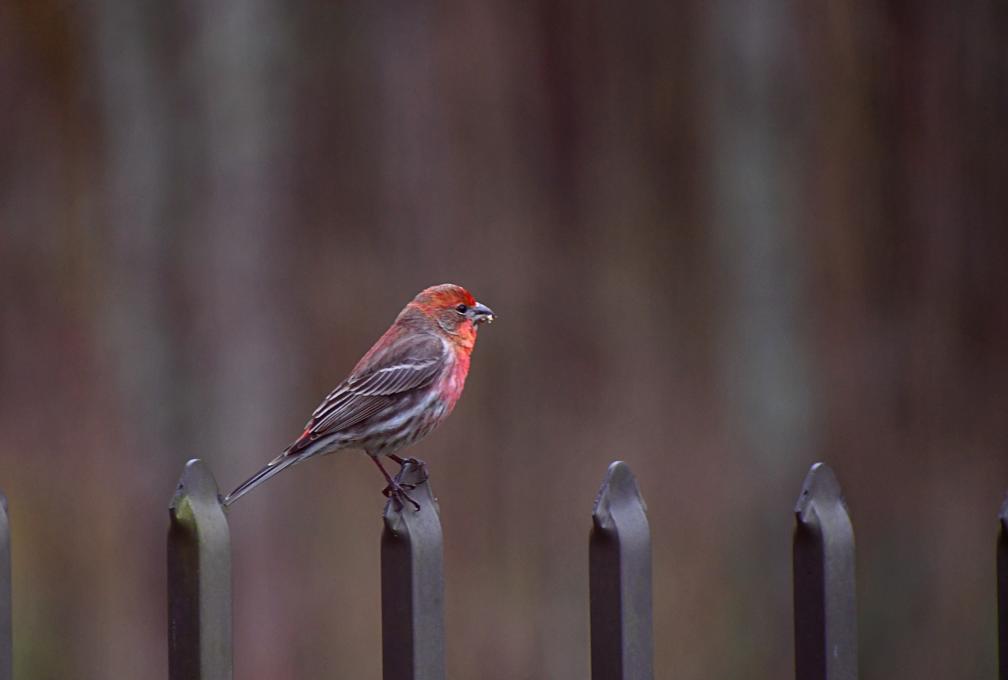
 Dark-eyed junco were more difficult to gain audience with. I had to be patient and still.
Dark-eyed junco were more difficult to gain audience with. I had to be patient and still. Pileated woodpeckers liked to keep me where they could see me and certainly at a distance.
Pileated woodpeckers liked to keep me where they could see me and certainly at a distance.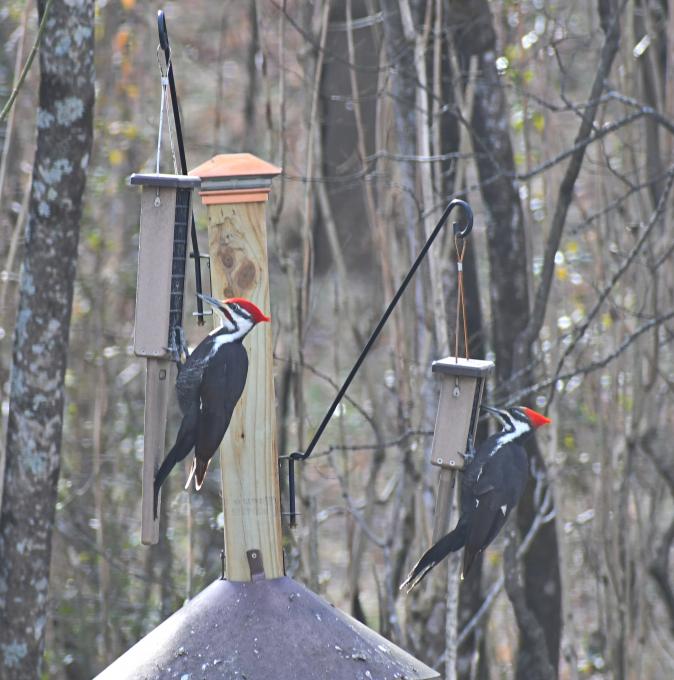

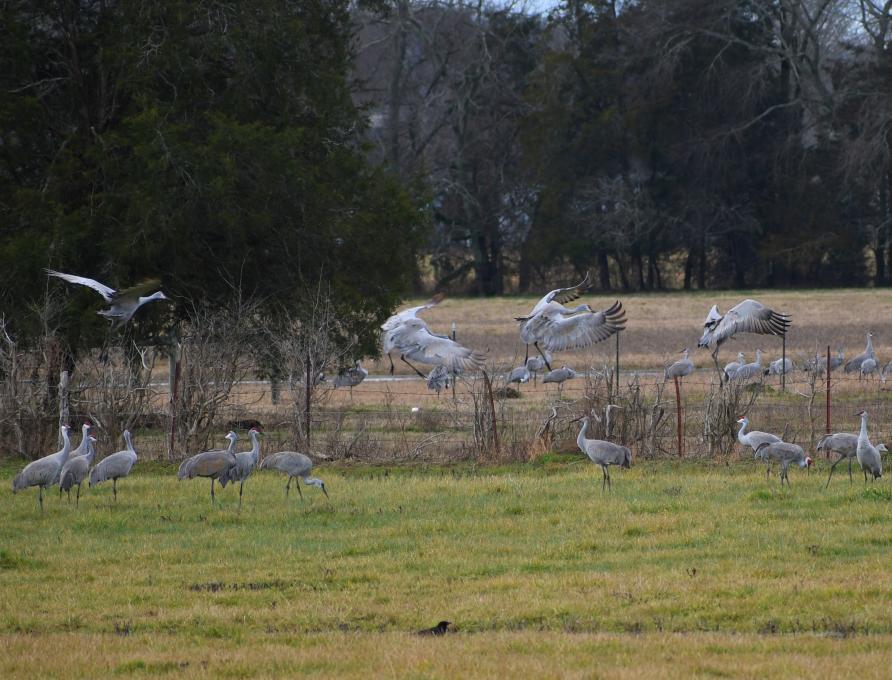
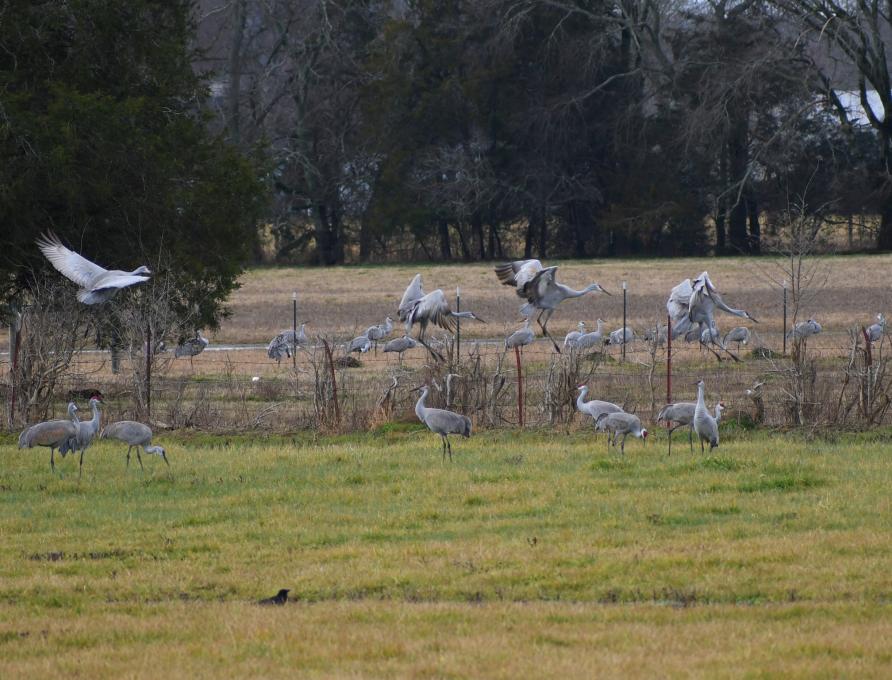
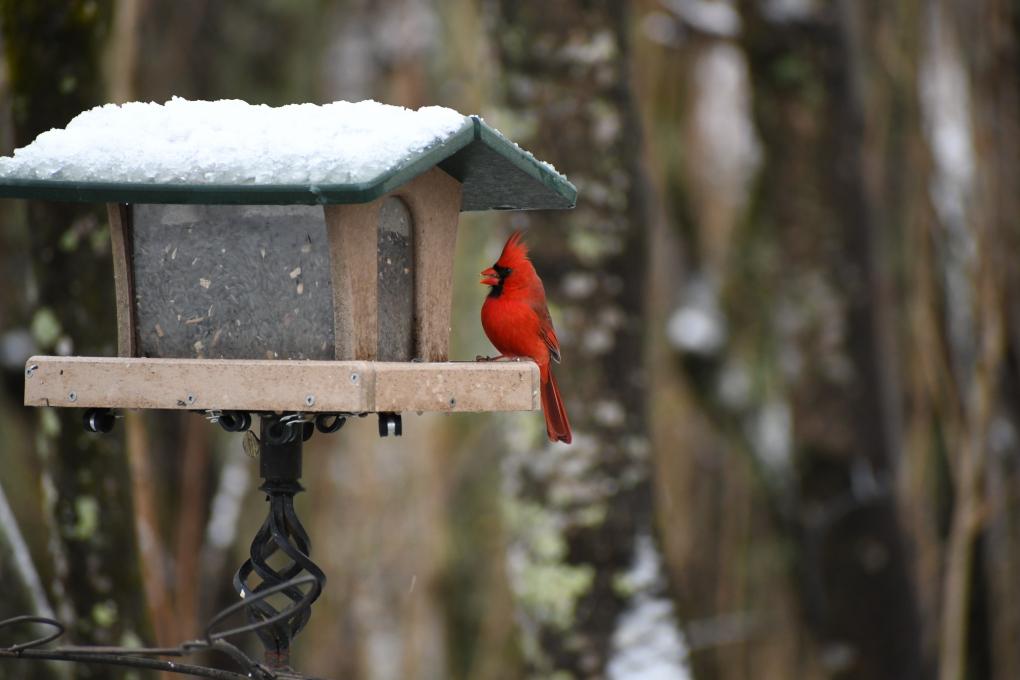 With the Merlin, I like the position of the Merlin facing out from the top of the only
With the Merlin, I like the position of the Merlin facing out from the top of the only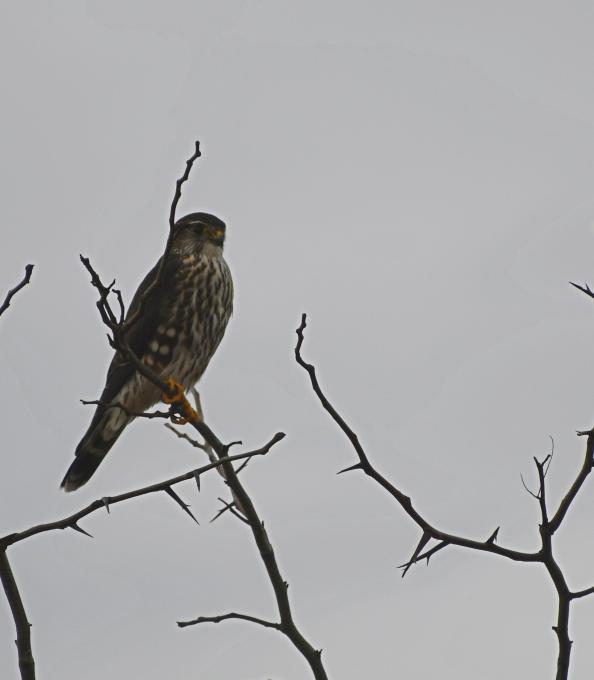 tree with the head turned slightly seeming to scan the area to locate a small bird for dinner. Perhaps a slightly higher position would be even better. I think there is certainly room for improvement in the shot but the eye twinkle is there slightly and I like the artistic appearance of the small limbs surrounding the bird making the setting almost show the violence this small bird is capable of bestowing. The background grey - while realistic - is lacking.
tree with the head turned slightly seeming to scan the area to locate a small bird for dinner. Perhaps a slightly higher position would be even better. I think there is certainly room for improvement in the shot but the eye twinkle is there slightly and I like the artistic appearance of the small limbs surrounding the bird making the setting almost show the violence this small bird is capable of bestowing. The background grey - while realistic - is lacking. 